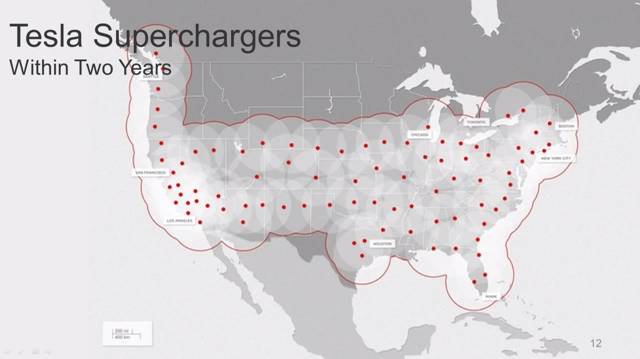The Register.co.uk reports: Even as Tesla Motors labors to build out its North American network of "Supercharger" recharging stations, the electric carmaker has unveiled an additional system that promises to get its vehicles juiced up and ready to run in less time than it takes to fill a traditional car's tank with fuel.
At an event at Tesla's Hawthorne, California design studio late on Thursday, founder Elon Musk showed off a system that can swap out a Tesla Model S's depleted battery for a fully charged one in around 90 seconds.
Motorists need never leave their vehicles. The driver simply parks the car over the designated spot and a platform rises from the ground, removes the 1,200-pound (544kg) battery from the underside of the chassis, and replaces it with a new one, all in around a minute and a half.
During Musk's demo, a screen overhead showed video of a motorist filling an Audi sedan's 23-gallon (87L) tank at a Los Angeles–area filling station, a process that took nearly four minutes. Musk took the opportunity to swap out a second Tesla's battery while he waited.
Unlike the company's Supercharger stations, which allow Tesla owners to recharge their batteries for free for the life of the car, Tesla plans to profit from the battery-swapping operation,
CNNMoney reports.
A firm price for the service hasn't been set, but Musk has said he expects each swap to cost at least $50. During Thursday's demo, the Audi driver paid $99.83 to fill up, though many car models feature smaller tanks.
The batteries that are swapped in are just loaners. Each swapping station will stock about 50 batteries, which drivers are expected eventually to return in exchange for their own, original batteries. Their batteries will be fully charged, but they'll have to pay for a second swap to get them back.
If returning to the same swapping station is too inconvenient, customers can optionally pay to get their batteries shipped to a different service center, or they can keep the new batteries. In the latter case, they'll need to pay the difference in value between the new batteries and their original batteries, based on the batteries' respective ages.
Each swapping station is projected to cost around $500,000 to build, but it won't all be money out of Tesla's pocket. The 90-second swapping time helps Tesla meet the "fast refueling" requirement for zero-emissions vehicles set by the California Air Resources Board (CARB), which allows the cars to qualify for government clean-energy credits.
Because Tesla cars burn no fuel and they're manufactured in such small quantities relative to the big US automakers, Tesla actually earns surplus energy credits, which it can sell to other companies. Last quarter, such sales brought in $67.9m, which helped Tesla post its first-ever quarterly profit.
Musk said that if there is sufficient interest, Tesla would also consider licensing its battery-swapping technology to other companies.
Meanwhile, Tesla has been working hard to expand its network of free-to-use Supercharger recharging stations, which it expects to cover 80 per cent of the US and Canada by 2014.
The battery-swapping stations will be installed as an additional option at select Supercharger locations along high-traffic routes, and the first stations are expected to appear late this year.



















